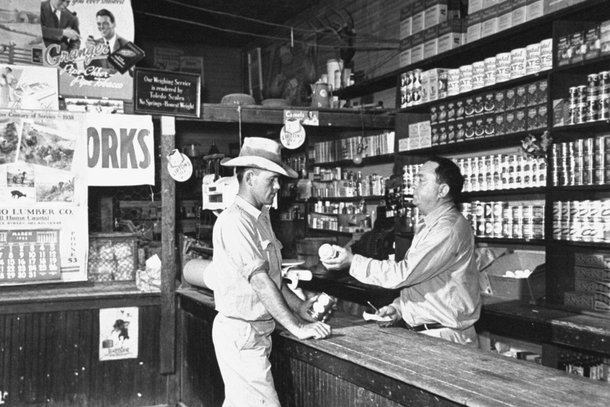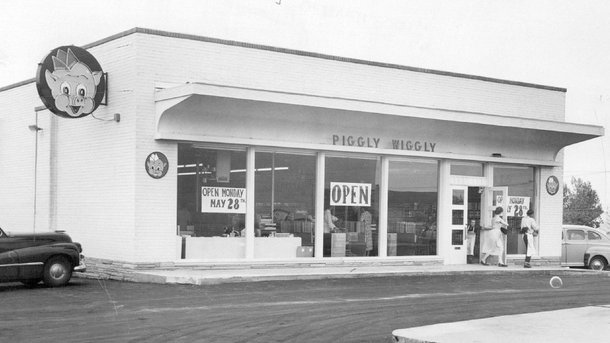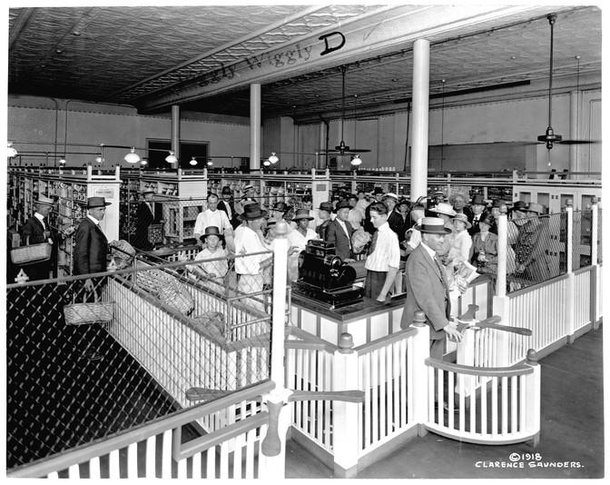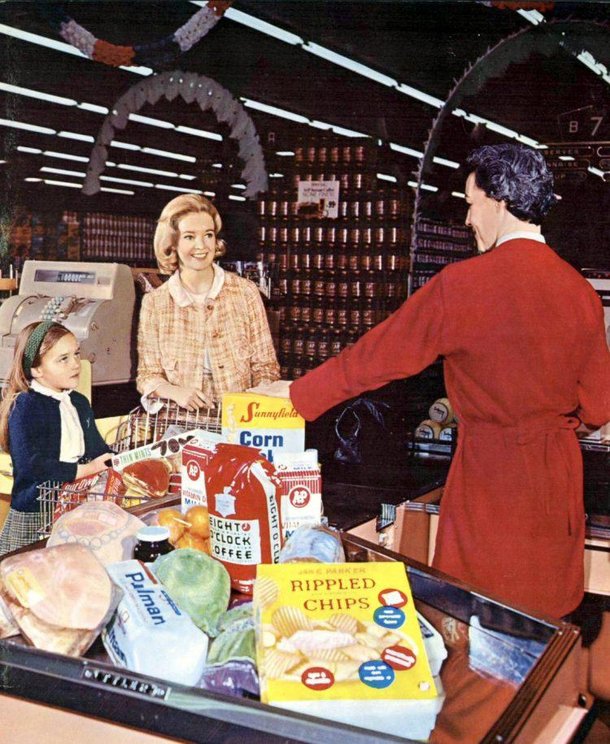According to the Food Industry, it is estimated that there are more than 40,000 supermarkets in the United States alone, and a USDA ERS survey of total food sales in North American territory in supermarkets, grocery stores, warehouse clubs and supercenters, reached US$ 653 billion in 2019 alone.
Over the years, supermarkets have shown themselves not only as an important pinnacle in the world food industry, but they have also become indispensable in providing almost all the daily and regular necessities that the population of a country needs. Its importance is not difficult to see, since strikes by truck drivers who supply stores or any type of delay and large-scale bad manufacturing are enough to cause damage and generate panic in anyone’s life.
 (Source: Carl Mydans/The LIFE Picture Collection/Getty Images)
(Source: Carl Mydans/The LIFE Picture Collection/Getty Images)
In view of its value, it is strange to imagine that until almost the middle of the 20th century, the market model we enjoy today did not exist, where you can simply pick up your cart, browse the shelves and put everything you need (or not) inside and then go to the checkout. In the 19th century, grocery stores were the only source for selling groceries, and there was a limited number of items the customer could purchase.
Furthermore, the most curious and unusual feature of all is that there was no custom of picking up their own groceries or any type of self-service. Grocery store clerks were in charge of collecting the customer’s preferred items according to their list and validating the purchase.
Until the market Piggly Wiggly changed the concept by opening the doors of the first store in Memphis, Tennessee (USA).
Choosing your own food![(Fonte: Carl Mydans/The LIFE Picture Collection/Getty Images)]()
 (Source: Denver Post/Getty Images)
(Source: Denver Post/Getty Images)
On September 6, 1916, the Piggly Wiggly market innovated the model by inviting its customers to enter the store, pick up a wooden basket and freely choose the items they would like to take home.
As at that time there was no practical way to publicize the new type of enterprise, Clarence Saunders, the entrepreneur who created the future multi-million franchise, hired a band on the opening day to attract customers, distributing balloons himself. for children and flowers for the women as I invited them to know the market.
 (Source: Library of Congress/Corbis Historical/Getty Images)
(Source: Library of Congress/Corbis Historical/Getty Images)
Saunders created the whole structure of a modern market, surprising the public and making them come back constantly also for prices much lower than grocery stores.
“One day, Memphis will be proud of the Piggly Wiggly, which will multiply and fill the Earth with more clean things to eat,” Saunders said, a few months after the first store opened, according to Mike Freeman, in an article to Tennessee Historical Quarterly.
And he started to see it later that year, when he managed to open more than 9 stores around Memphis.
The Great Phenomenon
 (Source: Click Americana/Reproduction)
(Source: Click Americana/Reproduction)
The concept of self-service Saunders’s quickly caught the attention of other supermarket chains, which replicated the new method in their stores, spreading the model across the country.
With the spread, the grocery stores were withering, at the mercy of their limitations and disproportionate prices, and were only required in emergencies, which ended up causing mass bankruptcy of the owners.
The easily acquired popularity might have worked if the Astor Market on New York’s Upper West Side had opened the same year as Saunders’ store. There the first supermarket concept emerged, when an army of food options were placed under one roof to be marketed by several independent sellers at the same time.
 (Source: H. Armstrong Roberts/Retrofile/Getty Images)
(Source: H. Armstrong Roberts/Retrofile/Getty Images)
It took until the 1930s for this to become a reality again, when New York pulled open-air markets off the streets and concentrated most vendors in places like Essex Stret Market. In the same year, an employee of the retail company Kroger, named Michael J. Cullen, sent a letter to his boss with the idea that gave rise to the model of street fairs we know today, with price disputes on the same type of merchandise. .
Meanwhile, by then, Saunders had lost control of his own company, but that didn’t stop the Piggly Wiggly market network from growing and becoming one of the best known in the country. And although it is not fully known, it remains in operation today, including the first store that became a model in a cozy place in Memphis.
Currently, the market is part of the supply company C&S Wholesale Grocers, and has more than 530 stores in 17 US states.








